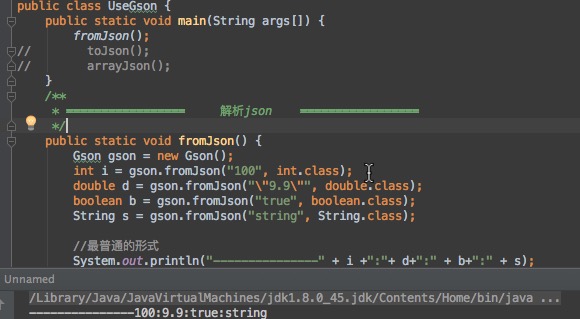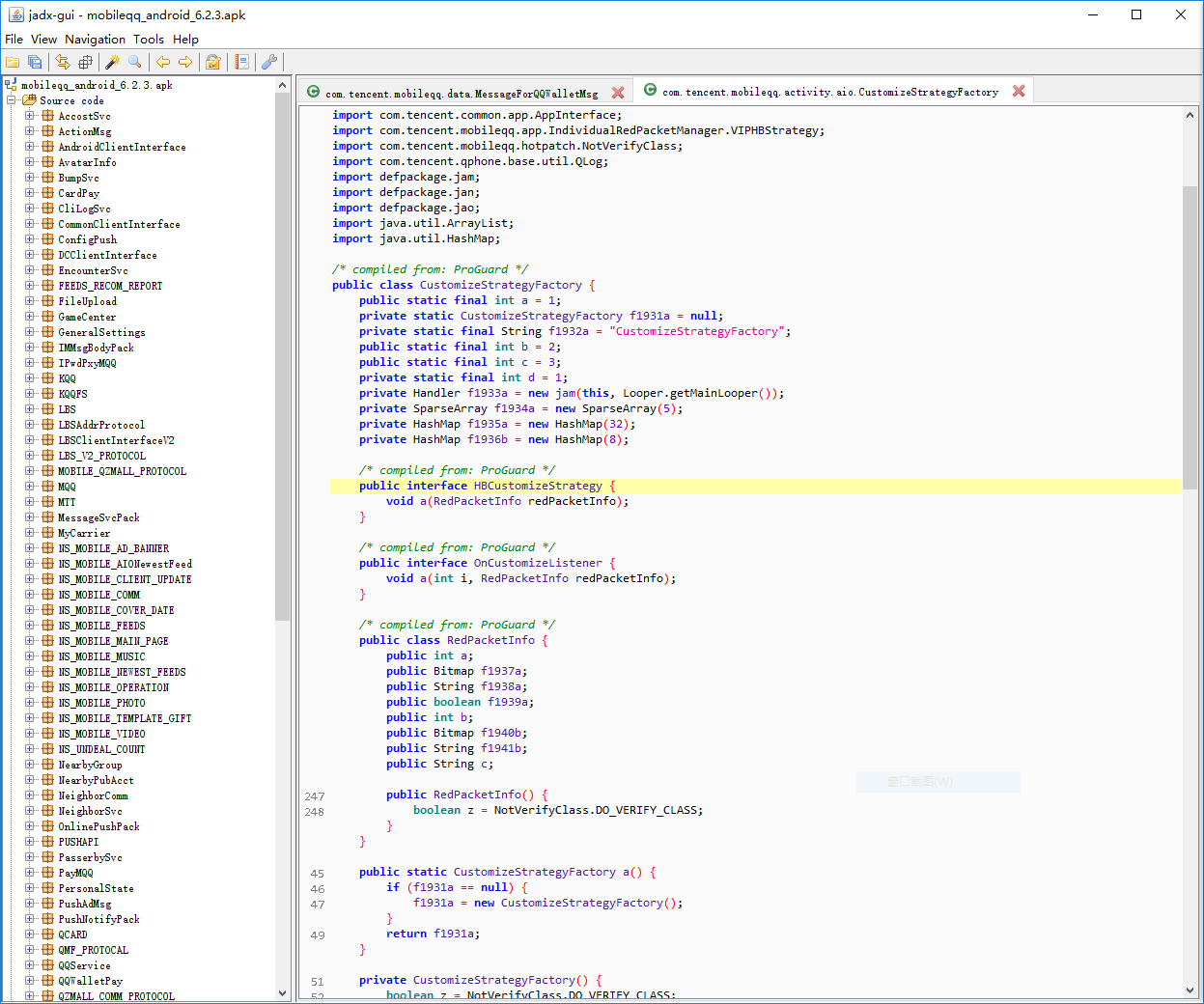編輯:關於Android編程
Android沒有對外公開結束通話的API,如果需要結束通話,必須使用AIDL與電話管理服務進行通信,並調用服務中的API實現結束通話,方法如下:
1> 從Android的源代碼中拷貝以下文件到項目中:
代碼示例:
DemoActivity.java:
package cn.itcast.endcall;
import java.lang.reflect.Method;
import com.android.internal.telephony.ITelephony;
import android.app.Activity;
import android.os.Bundle;
import android.os.IBinder;
import android.os.RemoteException;
import android.view.View;
public class DemoActivity extends Activity {
ITelephony iTelephony;
/** Called when the activity is first created. */
@Override
public void onCreate(Bundle savedInstanceState) {
super.onCreate(savedInstanceState);
setContentView(R.layout.main);
try {
// 獲取系統電話管理的服務
Method method = Class.forName("android.os.ServiceManager")
.getMethod("getService", String.class);
// 通過反射技術獲得binder對象
IBinder binder = (IBinder) method.invoke(null,
new Object[] { TELEPHONY_SERVICE });
iTelephony = ITelephony.Stub.asInterface(binder);
} catch (Exception e) {
e.printStackTrace();
}
}
public void endcall(View view) {
try {
// iTelephony.endCall();
iTelephony.call("15139394270");
} catch (RemoteException e) {
e.printStackTrace();
}
}
}另附NeighboringCellInfo.aidl:
/* //device/java/android/android/content/Intent.aidl ** ** Copyright 2007, The Android Open Source Project ** ** Licensed under the Apache License, Version 2.0 (the "License"); ** you may not use this file except in compliance with the License. ** You may obtain a copy of the License at ** ** http://www.apache.org/licenses/LICENSE-2.0 ** ** Unless required by applicable law or agreed to in writing, software ** distributed under the License is distributed on an "AS IS" BASIS, ** WITHOUT WARRANTIES OR CONDITIONS OF ANY KIND, either express or implied. ** See the License for the specific language governing permissions and ** limitations under the License. */ package android.telephony; parcelable NeighboringCellInfo;ITelephony.aidl:
/*
* Copyright (C) 2007 The Android Open Source Project
*
* Licensed under the Apache License, Version 2.0 (the "License");
* you may not use this file except in compliance with the License.
* You may obtain a copy of the License at
*
* http://www.apache.org/licenses/LICENSE-2.0
*
* Unless required by applicable law or agreed to in writing, software
* distributed under the License is distributed on an "AS IS" BASIS,
* WITHOUT WARRANTIES OR CONDITIONS OF ANY KIND, either express or implied.
* See the License for the specific language governing permissions and
* limitations under the License.
*/
package com.android.internal.telephony;
import android.os.Bundle;
import java.util.List;
import android.telephony.NeighboringCellInfo;
/**
* Interface used to interact with the phone. Mostly this is used by the
* TelephonyManager class. A few places are still using this directly.
* Please clean them up if possible and use TelephonyManager insteadl.
*
* {@hide}
*/
interface ITelephony {
/**
* Dial a number. This doesn't place the call. It displays
* the Dialer screen.
* @param number the number to be dialed. If null, this
* would display the Dialer screen with no number pre-filled.
*/
void dial(String number);
/**
* Place a call to the specified number.
* @param number the number to be called.
*/
void call(String number);
/**
* If there is currently a call in progress, show the call screen.
* The DTMF dialpad may or may not be visible initially, depending on
* whether it was up when the user last exited the InCallScreen.
*
* @return true if the call screen was shown.
*/
boolean showCallScreen();
/**
* Variation of showCallScreen() that also specifies whether the
* DTMF dialpad should be initially visible when the InCallScreen
* comes up.
*
* @param showDialpad if true, make the dialpad visible initially,
* otherwise hide the dialpad initially.
* @return true if the call screen was shown.
*
* @see showCallScreen
*/
boolean showCallScreenWithDialpad(boolean showDialpad);
/**
* End call or go to the Home screen
*
* @return whether it hung up
*/
boolean endCall();
/**
* Answer the currently-ringing call.
*
* If there's already a current active call, that call will be
* automatically put on hold. If both lines are currently in use, the
* current active call will be ended.
*
* TODO: provide a flag to let the caller specify what policy to use
* if both lines are in use. (The current behavior is hardwired to
* "answer incoming, end ongoing", which is how the CALL button
* is specced to behave.)
*
* TODO: this should be a oneway call (especially since it's called
* directly from the key queue thread).
*/
void answerRingingCall();
/**
* Silence the ringer if an incoming call is currently ringing.
* (If vibrating, stop the vibrator also.)
*
* It's safe to call this if the ringer has already been silenced, or
* even if there's no incoming call. (If so, this method will do nothing.)
*
* TODO: this should be a oneway call too (see above).
* (Actually *all* the methods here that return void can
* probably be oneway.)
*/
void silenceRinger();
/**
* Check if we are in either an active or holding call
* @return true if the phone state is OFFHOOK.
*/
boolean isOffhook();
/**
* Check if an incoming phone call is ringing or call waiting.
* @return true if the phone state is RINGING.
*/
boolean isRinging();
/**
* Check if the phone is idle.
* @return true if the phone state is IDLE.
*/
boolean isIdle();
/**
* Check to see if the radio is on or not.
* @return returns true if the radio is on.
*/
boolean isRadioOn();
/**
* Check if the SIM pin lock is enabled.
* @return true if the SIM pin lock is enabled.
*/
boolean isSimPinEnabled();
/**
* Cancels the missed calls notification.
*/
void cancelMissedCallsNotification();
/**
* Supply a pin to unlock the SIM. Blocks until a result is determined.
* @param pin The pin to check.
* @return whether the operation was a success.
*/
boolean supplyPin(String pin);
/**
* Handles PIN MMI commands (PIN/PIN2/PUK/PUK2), which are initiated
* without SEND (so dial is not appropriate).
*
* @param dialString the MMI command to be executed.
* @return true if MMI command is executed.
*/
boolean handlePinMmi(String dialString);
/**
* Toggles the radio on or off.
*/
void toggleRadioOnOff();
/**
* Set the radio to on or off
*/
boolean setRadio(boolean turnOn);
/**
* Request to update location information in service state
*/
void updateServiceLocation();
/**
* Enable location update notifications.
*/
void enableLocationUpdates();
/**
* Disable location update notifications.
*/
void disableLocationUpdates();
/**
* Enable a specific APN type.
*/
int enableApnType(String type);
/**
* Disable a specific APN type.
*/
int disableApnType(String type);
/**
* Allow mobile data connections.
*/
boolean enableDataConnectivity();
/**
* Disallow mobile data connections.
*/
boolean disableDataConnectivity();
/**
* Report whether data connectivity is possible.
*/
boolean isDataConnectivityPossible();
Bundle getCellLocation();
/**
* Returns the neighboring cell information of the device.
*/
List getNeighboringCellInfo();
int getCallState();
int getDataActivity();
int getDataState();
/**
* Returns the current active phone type as integer.
* Returns TelephonyManager.PHONE_TYPE_CDMA if RILConstants.CDMA_PHONE
* and TelephonyManager.PHONE_TYPE_GSM if RILConstants.GSM_PHONE
*/
int getActivePhoneType();
/**
* Returns the CDMA ERI icon index to display
*/
int getCdmaEriIconIndex();
/**
* Returns the CDMA ERI icon mode,
* 0 - ON
* 1 - FLASHING
*/
int getCdmaEriIconMode();
/**
* Returns the CDMA ERI text,
*/
String getCdmaEriText();
/**
* Returns true if CDMA provisioning needs to run.
*/
boolean getCdmaNeedsProvisioning();
/**
* Returns the unread count of voicemails
*/
int getVoiceMessageCount();
/**
* Returns the network type
*/
int getNetworkType();
/**
* Return true if an ICC card is present
*/
boolean hasIccCard();
}
 Android動畫完全解析(一)
Android動畫完全解析(一)
一、View動畫1、常見的4中View動畫:AlphaAnimation、ScaleAnimation、TranslateAnimation、RotateAnimatio
 Android開發筆記(一百二十四)更好看的圖像控件
Android開發筆記(一百二十四)更好看的圖像控件
畫廊GalleryGallery是一個早期的畫廊控件,左右滑動手勢可展示內嵌的圖片列表,類似於一個平面的萬花筒。雖然Android現在將Gallery標記為Depreca
 android-gson使用
android-gson使用
平時用到也就那麼幾個方法,花費了時間學的東西用的少就忘記了,撿一撿是時候做做記錄了.為了以後復習起來也方便json是一種格式,用來交換文本形式數據.解析json的方式也有
 Android反編譯看看手Q口令紅包的實現原理
Android反編譯看看手Q口令紅包的實現原理
首篇作為開始,先講講簡單的反編譯。反編譯通常有幾種目的:互相學習、借來用用、嘿嘿(干你,又分為小干干類似微信紅包,和大干干改別人的apk幫他上架)。因為沒帶kvm回來,m